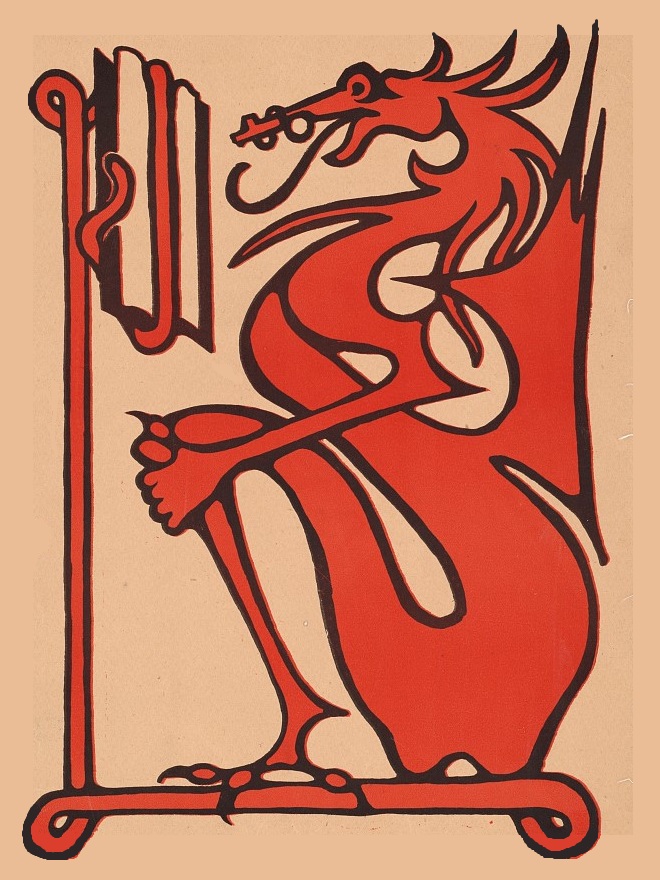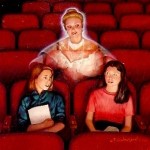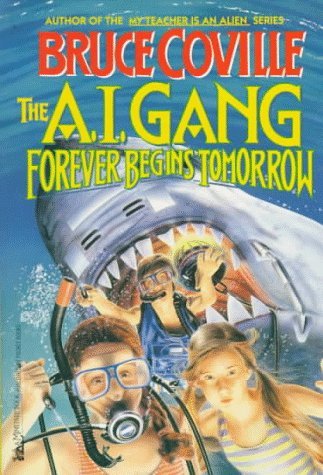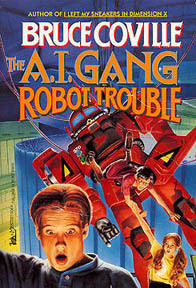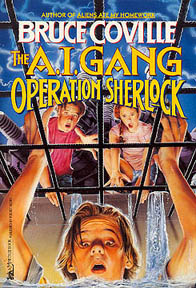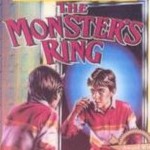How to even get in the door
The house lights dim to orange. Kindly find your seats. Irresponsible actors scramble to their places; air pressure billows out the curtain each time one of them goes by. We know they’re up there. We know the actors are on the stage, but we can’t speak to them, nor they to us; we don’t know where their places are, nor why they waited until now to get get their butts in gear. The only proofs of their existence are the scurrying of scuffed sneakers, and somewhere a stage manager who growls, “Go around!” The actors (and the stage manager, too) are beyond the veil.
Notorious communist Alasdair MacIntyre (since reformed) said it best: “If you want to become a better actor, you gotta do, technical term here, ‘the whole theater thing.’ No philosopher, no textbook can introduce the whole theater thing to you, only theater kids who in turn have done the whole theater … thing.”1 Anyone who’s lived this life understands, anyone who’s been there when strangers become family, when rising stars become fixed in the pantheon, when elders raise up the new generation.
Now the house goes dark, and a wavering luminescence near the stage comes into focus. A human figure, beautiful, tragic. Elbow over the back of her seat, she looks directly at us. Allow me to introduce The Ghost in the Third Row. She has seen it all play out, from beginning to end; she understands. Today she speaks to us from beyond the veil.
This is a story about friendship
Please don’t throw my article on the ground when you discover this, but the ghost is not the main character. Word by word, the majority of the novel depicts two (2) preteen children rampaging through their small town un-chaperoned in a state of perfect unselfconsciousness, enjoying no filter at all on their emotional expression, intoning, “The Emperor has no clothes,” here, talking to imaginary creatures there, learning (haltingly) to become, if not well-behaved, at least legible members of society, but blissfully unaware that this learning process will change them, themselves.
This is known as innocence. This is known as fearlessness. As the Cossack said to the nanny when she caught him conveying catapults to kindergarten, “It takes a child to raze a village.” Stage managers out there are nodding their heads, yes.
But, because Alasdair MacIntyre does not write for the eleven-year-old demographic, we have unanswered questions about how, how? when social and professional institutions are cobbled together from preconceptions and nepotism, when gatekeepers have no patience and no incentive to explain their own standards … how to even get in the door. Coville’s answer: “I get by with a little help from my friends.” Here’s how it works.
People have motivations. Children have fewer motivations than we, the aged, because they don’t know how “things” work, yet. But children are very motivated to make their loved ones happy. A negative example: children have no professional ambition. A steely parent could order their kid to hurry up and find some. The child can’t, so they are punished; they can only pretend, so an untrue version of themselves is praised; but it might appear to be working because, as you know, children are very motivated to make their loved ones happy.
The positive example? That old nanny’s standby: walking two by two, the buddy system. A child could never navigate accession by themselves into any institution. Children learn social behavior by socializing with their friend. The magic is that, from the adult point of view, making their loved ones happy is now revealed to fulfill the requirements of what gets them through the door. Adults didn’t design institutions this way rationally; institutions are this way because the adults who believe they have designed them, were once children. (Once. Hah!)
So, like Quixote and Sancho Panza, our (s)heroes contrast and complement each other. The story captures the moment in the girls’ lives when they cross a hazy boundary; they cease to be outsiders and become theater kids. Coville’s thesis is that accession works on the buddy system, so the novel has two protagonists: the best friend and the leading lady.
If only the ghost had had a best friend in her time. But then I guess we wouldn’t get to enjoy the drama.
Ghost stories
In this century, we have an answer to the question, “Which genres make up genre fiction?” For each manuscript, someone’s job is to get out their best shoehorn and belt out Rihanna’s unavoidable refrain. And for many, standing under her umbrella means the difference between advertising and obscurity. But it wasn’t always this way.
You may have heard this narrative. The first genres, as such, were 1) crime, 2) science fiction and 3) Western; but small publishers of 4) romance became so successful that the cigar-chomping misogynists who used to run the Big Thirty-Six (whoops! make that the Big Five) grudgingly hauled romance onto the podium and gave it a biff on the shoulder. Well, I regret to inform you that none of this happened (except the merger of all the publishers).
What did happen was that the genre-less pulp magazines of the roaring ‘20’s (help me strain this metaphor, here) published a dissertation on supply-side economics, To Each His [stet] Own Umbrella. Editors, not fans, exhort writers to write prolifically within genre conventions, to make already chewing-gum stories more digestible. Not everyone can sideline as a registered nutritionist. Oh, yeah, and romance had to fend for itself, but now gets to laugh, as they say, all the way to the bank.
Maybe some ghost stories could be published as horror. The Ghost in the Third Row had better success elsewhere, and is subtitled, The Nina Tanleven Mysteries, Book One. Makes sense, right? When you meet a ghost, you know something titillating happened back when they were alive. If there had been no crime, there would be no ghost story. (Following the Hayes code, the Crime genre has been renamed Mystery for fear of glorifying Judas Priest, British Steel, track 1, “Breaking the Law.”)
Besides their mysterious heritage and criminal influence, ghost story conventions have bought into the paranormal trend (how is such a trend even possible?) in which paranormal investigators—debunkers, professional skeptics—who once exposed con artists, now undergo a postmodern turn, and investigate Stuff They2 Don’t Want You To Know About.
Thinking about Nina Tanleven as a genre novel, the protagonists are not just any sleuths but kid sleuths, a much-beloved sub-genre with its own tropes and formulae. What are the rules of kid sleuths? People sometimes endanger kids, but sleuthing itself is moral and therefore never dangerous. Just the opposite: detective behaviors—research, critical thinking, stalking—give kids exposure to the grown-up world and help them make informed decisions about their future. Saccharine they may be, but the job of kid sleuths is to be good role models for kid readers, not to scare them.
Lastly, ghost stories predate the genre press, predate the written word for that matter. So there is an influence of folklore in these stories: ghosts instruct the plastic, cynical modern child about the hard-wearing, honorable world of their grandparents. Why? when they never seem to listen, I couldn’t tell you.
Synopsis
On the first page, in the first sentence, The Ghost in the Third Row homes in on this idea that theater is a tradition, a MacIntyrian ‘practice’ complete with history, hierarchy, canon, convention, script and yes, superstition. The story begins at an audition, a situation where you will be tested (and found wanting). Well, our heroes make the cut. The more tomboyish sidekick is Chris Gurley; the hero hurltling from childhood toward something else is Nina Tanleven. Chris is the muscle; Nine is the brains. This is how far we will follow them: from audition to opening night.
But, like paranormal stories, The Ghost in the Third Row also supports herself on the irony between fake supernatural events, and real ones. A series of ghost attacks? Who could be responsible? Ironically, only those who believe in life after death can solve the mystery, because the real ghost must be exonerated before our heroes can track down the all-too-human saboteur.
The novel is kind enough to itemize the prerequisites for admission into this ‘practice,’ very instructive for any reader who has never been initiated and may be curious about the rules. Stage fright, check. Crush on the director, check; jealousy due to crush, double check.
Stand by helplessly while leading lady gasps through a panic attack, check. Shrink away from powerful modern woman stage manager who has no time to baby every actress that passes through, check. Invisible, magical creature recognizes honesty in young girls’ hearts and gives them her blessing with the emotional tenor of your basic Good Witch of the North, check.
Nine and Chris are learning how the industry functions, behind the scenes. Those trade secrets; you’d be amazed; one day it suddenly looks like you know what you’re doing.
There is a rival kid actress, the one who has to fake professional ambition because her mother is Joseph Stalin. Argue whether the ‘practice’ belongs to the rich or poor, but learn toleration enough to share trade secrets across class and perhaps ethnic lines, check. (Rich, abused white girls communicate through hazing. So check that off, too, I guess; how the hell are you going to stop them?) Put a hand on the director’s shoulder while he has the good old rehearsals-moving-too-slowly meltdown, check. Rescue the production, its ticket sales, and ultimately the musty edifice of the main street theater itself from vandalism, arson and worst of all the small-town rumor mill, check.
Fulfill these same requirements, young reader, and you, too, could be promoted to Thespian, Private, First Class.
It must be said that The Ghost in the Third Row takes her sweet time getting around to the mystery formula, and the kid sleuths don’t turn in their list of suspects until at least the halfway point of the novel.
Suspecion, exoneration. Process of elimination. Readers of mystery know this structure forwards and backwards. Each time the sleuths stalk a suspect, they discover three things: proof of innocence; some juicy personal drama that explains why they looked suspicious to begin with; and finally a clue leading them to the next suspect.
The appeal of the straight mystery plot, in this century, is not inductive reasoning. No locked room here; no briar wood pipe. Instead, for each suspect, we indulge in a short character study. The reader graphs out their relationships, studies their tell. When interviewed, the suspect is called on to give a humane emotional response to the crime; hilariously, they all flub. A hangman walks into a bar. Gallows humor.
The rational motive given why each suspect might wish to sabotage the show? Not the novel’s strong point. Coville lampshades this fact: kid sleuths don’t always understand grown-up motives, and our heroes’ imaginations matter to the story more than proving reasonable cause. Anyway, the investigation brings the reader a degree of intimacy with each of the characters who labor in the small-town drama industry, resulting in sympathy, even gratitude. Overworked composer impatiently rewrites a song to fit your vocal range, check. Overworked costumer drops jaw-dropping gossip for the low price of sticking you impatiently with a pin, check.
And atmosphere. Ghost stories, like fog machines, are held to high standards of churning out atmosphere. More important to the novel than clues qua clues—a sepia photograph here, a matchbook there—are the paragraphs that develop the milieu. Sneak into the balcony seating while the theater is dark, check. The cast mobs the stage after curtain on opening night to exchange hugs, in a state close to intoxication or mania, check—Coville can’t muffle that yearning for human unity. Lie down in coffin in the props storage, check. There’s a trapdoor in there somewhere, check.
Are these clues? They’re more like play-clues. The kids persuade each other that playing around with the theater’s most ambiance-laden paraphernalia might help their investigation. Drool over a famous autograph, check. Ogle the program from some schmaltzy prewar production, check.
I guess that leaves our new inductees only one more milestone to pass, one that could never take place except at the conclusion of a ghost story: a final laying to rest, a line to the past that can never be thinned, much less severed, the protagonist’s stepping into a place where others have stood before her. The repair of the veil that has been pierced; drawing the curtain. With the arrival of a new generation, the old guard just fade away. A first and last dance.
Applause, check.
Oh, and the solution to the mystery? Well, just like our grounds for suspicion are not the strongest part of the story, the saboteur’s reasons may well have been shoehorned in after the rest of the manuscript was complete. But I’ll tell you: it’s not the old man. The set-builder is not the saboteur. In fact, arguably the reason the place is haunted by a pretty lady is because he’s been building up her memory this entire time, keeping it in repair, under the spotlight, burnished and presentable, see? Suffice it to say that the real saboteur suffers from jealousy and neglect that is connected to the ghost. So the solution is that if everyone had stuck to the buddy system then none of this would ever have happened.
Metaphor; symbolism; sensory imagery
Let’s spell out the heady, abstract structure of the novel. By living the life after death, ghosts bridge generations; by walking through walls, ghosts bridge instutions. Death is a metaphor for accession: you know there are people on the other side but they no longer deign to talk to you. Those who have never bothered with MacIntyre—most people—could weigh a ghost story with a kid protagonist and conclude, death is a metaphor for growing up.
Accession should not be a form of torture imposed on children by a Soviet mother; normally, accession feels good—really good. The Ghost in the Third Row has a happy ending. It is only when Nine is finally at home in the theater that she can witness the ghost fade away one last time; and she feels joy, joy for the ghost’s ultimate triumph, joy for being there in the audience, there on the spooky balcony, to receive the ghost’s great performance. Being murdered did not make the ghost resentful, hurt, or frightened. The ghost did not mind dying. As a human person, perhaps even as a child, her wish was to do the whole theater “thing” and amazingly, with little more than hard work, dedication and in her case a thin white body but what do you want? it was the ‘20’s … she achieved that goal, indeed, even death did not rob her of that experience, that self-determination, that self-actualization. She performed and achieved triumph onstage. She died onstage. She lingers onstage. Her haunting, and her way of appearing selectively to pure-hearted virgins—“young women”—have been a way of sharing her love for the stage. Her life (and death) have been joyous, beautiful, an aspirational example for Nine. Work complete, she fades away from the stage.
Her work. Coville summons the ghost as gargoyle, as if to say, every place needs its pagan protector. She ensures that the building—and the ‘practice’—known as The Grand Theater, survive. Nine will now do the same. Nine’s success as a singer, her immature goal before she learned how the industry functions, may not have been able singlehandedly to carry the theater forward into the new generation. But herself and Chris together—and, yes, they patch things up with the abused, abusive rich girl—together they can do it. On page 1, the Grand is in financial danger, and the theatrical tradition is endangered by forces including white flight, the decline of the nuclear family and postmodern ennui; on page 144, everybody is on a stable footing. Nine and her generation have taken up the work that the ghost used to do.
I’ve made the claim in another article that, much more so than literature per se, middle-grade fiction has elements of role-modelling; that is, the reader learns that the protagonist’s experiences are plausible. The Ghost in the Third Row heavily models friendship as a basis for otherwise institutional interactions. The most difficult part of rehearsals is waiting your turn? Sit with your friend. Trapped yourself in a prop coffin from another show? You’re gonna need a buddy to run for help. Stalking someone? You can cause a distraction while your friend gets the information. Without examples like these, kids can’t be expected to know how to function within the confines of any profession.
To back up briefly, realize that the saboteur and the ghost don’t know about each other; or, if the ghost knows about the saboteur, she doesn’t seem to care. Nine’s mystery is the mystery of the ghost. The cast and crew’s mystery is the mystery of the saboteur. When the two come together, we have the story of Nine’s relationship with the theater. A kid reader might take this as role-modelling, “how to decide if a ‘practice’ is right for you.” I’ll explain.
What if Nine had decided not to get involved with the mystery of the saboteur? Perhaps she never became friends with Chris, and had no one to steer her in that direction. The production would have been ruined. No other dynamic duo was coming to save the day. So how is the Grand Theater saved? By Nine’s heroism? Her choice? Far from it. The actions Nine and Chris undertake that save the day were actions in which they couldn’t help themselves. They are two kids just out here having fun.
And, clearly, if they had been two very different people, self-deputized sovereign citizens or something like that, and had pursued the saboteur because defending others is the right thing to do, what would that be like? That would be a world in which childhood is just a wash; the most unfair outcome you could imagine. Eleven-year-olds, researching murder and stuff that happened before their time, putting themselves in peril, straining their undeveloped brains to outfox a dangerous grown-up? Bringing the panicked saboteur in under arrest? We would never stand for a story like that. If someone submits that manuscript to you, you had all better give it a ruthless panning.
No, the advantage that Nine and Chris have over the saboteur is, I know it’s saccharine, it’s friendship. They’re in the right place at the right time because they encourage each other’s curiosity, and agency. They tell each other, “knowledge is power.” When one is distracted by eleven-year-old concerns, does the other one tell her to stay focused? Never; she proceeds doing her own part of the detective work, because it’s fun, and if it isn’t, the two of them come at the problem later from another angle. There’s no martyrdom in this novel, not on the kids’ parts anyway.
In real life, accession is not some purely antagonistic experience of overcoming excessive and arbitrary barriers only to see any material reward negotiated away before one ever attains the power within one’s new community to defend oneself. Black American readers are getting a good laugh out of that remark. But at least, we can imagine a society in which a profession or tradition, while maintaining necessary boundaries, also maintains internally redistributed resources, which empower the initiate in ways that make the whole mess worthwhile. So here. Composers collaborate with singers; that’s part of what makes theater, theater. Nosy stage managers try to keep tabs on the physical location of cast and crew; this safety (safety from each other, and from the outside) is a resource that is thrust upon new members from day one without negotiation.
The ghost is a metaphor for these resources. From the moment of audition until after opening night, she demands nothing of Nine and Chris, but she is there for them. She was there for them long before they arrived.
The thematic material for The Ghost in the Third Row is varied and a little tangled, but that’s normal for an insider-perspective novel. (The self-insert character is Nine’s dad.) Coville wouldn’t, couldn’t write a community theater novel if he wasn’t a community theater kid. That perplexity is verosímil; it is realism unembellished. It makes for a nice read; the plot doesn’t feel like it runs on railroad tracks.
Love letter to the old main drag
The setting for The Ghost in the Third Row is the author’s long-time home in Syracuse, NY, undeniably a small town, ineluctably American, a setting so typecast for shameless nostalgia that I wonder whether Coville chose ghost stories or ghost stories chose him. Scenes depicting the two best friends’ silliness and earnest self-expressions work well in the small-town setting. No one in Syracuse has ever before uttered the kinds of salt-of-the-earth, far-afield metaphors that Chris comes up with. You couldn’t say the same if the story took place in the Lower East Side. The suspension of disbelief required to get two untrained, unknown nobodies up onstage is very light. In the small town theater scene, enthusiasm counts for more than formal training.
The nostalgia element hums along when we’re in the theater; it’s less powerful in town. Unlike your slasher flick or the colonial guilt nostalgia of your Stephen King, the purpose of the supernatural is not to punish the protagonists for squandering the bounty of a land that their ancestors so effortfully emptied. (In that kind of horror story, the supernatural used to be held at bay precisely because men used to be real men, etc.) The decline of culture and society is tragic only because of the beauty, richness and indeed opportunity that real people used to experience; adults wish wistfully that kids these days could have experiences like their own.
At least, this is the portrayal. If we took the novel as describing reality, this would not be an uncontroversial set of claims. When there are fewer children to compete with locally, what are the experiences of the children who live somewhere else? When there are fewer adults to present a danger, and when everyone knows everyone, an attacker is better able, not less able, to threaten a victim by saying that calling for help will be worse than submission. (When Nine develops crushes on grown men, she’s in no danger from the men, from other girls, or from herself—in the story world. In real life, would this be true in a small town? Would it be any more or less true in the city?) Finally, the types of people making up both the past and present communities are subject to selective memory.
There are zero black (or indigenous) characters in this novel. We will generously assume that, however this got to be the case, it’s an honest depiction of one or more small towns in 1987, and that not every middle grade novel can give adequate coverage to settler-colonialism and Jim Crow.
A wrinkle: I read The Ghost in the Third Row as a kid, and can at least try to compare the racial story as I perceived it then and now. The striking difference: back then, I (mis)interpreted Nina Tanleven as … not black, but not white either, with a single dad who is not white. Perhaps I thought she was intended to be Puerto Rican. I think I was waiting, as I made my way through the book, for the moment when the mean girl refers to her as a Mexican and she replies, either, “Mexico is a large country and there’s no shame in being born there,” or more typically as the 90’s became the early 2000’s, the triumphant correction, “I’m Guatemalan,” or whatever, a trope that lamentably causes hives in many documented cases. But what is going on here?
Two things.
“Tanleven” is a made-up name as far as I can tell; please write in if you have information otherwise; still, I feel confident when I make the claim that all made-up names nevertheless fall into real life racial, ethnic, linguistic categories. More likely than Latino, maybe the author thought of Tanleven as an East Slavic name. Maybe his goal was to invent the most unplaceable, ethnically un-ethnic made-up name in the history of fiction; even in that case he must have known about readers’ proponsity to try to place everything and, I guess in this case, to try to race everything.
What’s indisputable is that the protagonist’s peers perceive her name as being unlike their own. Other characters do not make fun of her name, not in Book One, anyway, but the possibility that they might do so adds tension to Nine’s social interactions. So, if she’s not canonically differentiated from the mainstream by race, she’s clearly differentiated by something. Thinking about her single dad, and how rare that family structure was in 1987, and the symbolic phenomenon that names come from dads, let’s say she has a non-mainstream background, a word that sometimes paraphrases race but could certainly embrace blowing up the nuclear family structure. Now, everyone in community theater has an insecure relationship with society; they’re bohemians, weirdos, at best a wannabe. Nine’s background gives her the same insecurity within theater; this is called intersectionality. The reader is meant to know that, at any time, bigotry could make an entrance, and then Nine’s entrance into the profession would be denied. In the story as written, this never takes place. So community theater is a harbor not only for perverts, addicts and the terminallly idealistic, but now also for people with made-up last names.
Is this the best possible mapping of this idea through metaphor onto the page? Probably not. It’s one of those times when Coville’s writing, while not hateful, and while suggesting the stories we need, falls short. But assuming my interpretation is valid, let’s see where it leads us.
When the new child joins the profession, the profession grows. You see? Not just by gaining a new member, but by proving that it can accommodate people from a background who have never achieved success in the profession before. We alluded to traditions maintaining boundaries of their choosing; when a tradition grows, it does so independently of the mainstream, sometimes in opposition to the mainstream. For a twentieth century writer, the political parallel is unavoidable. Sometimes the mainstream is capable of mass suicide, and in hindsight, in all of these cases recent enough to stand in living memory, had the professions maintained a greater sense of their own internal values, they would have been powerful enough on their own, temporarily, to prevent this behavior by everyone else.3
Coville clearly feels not only that accession is a very nice experience to have, but that it’s in the institutions’ best interest, that institutions have almost a duty to facilitate the accession of new types of people, that theater is in this way a good role model for the rest of society. Every other institution in the social universe could benefit from embracing new backgrounds; only in this way can society as a whole work out how “things” should be. The alternative, as MacIntyre indeed argues, would be “… some kind of top-down approach, which, just, ugh.”
So there’s my understanding of the book. The ghost represents the things kids need from institutions. Nine represents the kind of person who needs those things (because they aren’t redundantly supplied by her background). The best friends represent best friends. And Coville wants to color nostalgia with his peculiar gel sheets: institutions of the past could’a, would’a, should’a behaved pro-socially. This farm-to-stage nostalgia is anti-Enlightenment; it is MacIntyrian in that our only hope for improving society today comes from insider knowledge of closed-door traditions of the past.
In closing, I will disclose that the bologne that Coville undertook to write into Chris’s mouth caused me multiple times to laugh out loud while sitting in a quiet room—previously quiet—by myself. If you aspire to do the same, then maybe The Ghost in the Third Row is the institutional resource you need. So until next time, everyone, break a leg.

- Quotations attributed to MacIntyre in this article are purely fictitious. Any resemblance to his actual publications in purely coincidental and unintended. ↩︎
- They? yes, They ↩︎
- I represent that this claim about history enjoys a sort of consensus. I do not represent that this claim is the consensus. For one thing, the other side would (and did) argue that traditional institutions have no such power anymore; hence the need for a virile, socially conservative strongman. ↩︎
